Visão geral de Pó de alta pureza
No mundo da ciência dos materiais, os pós de alta pureza são os blocos de construção da fabricação e tecnologia avançadas. Essas partículas finamente moídas — muitas vezes metais ou ligas metálicas — são valorizadas por sua pureza excepcional, tamanho de partícula consistente e composição química precisa. Mas o que exatamente é pó de alta pureza? Por que é tão importante? E quais são os diferentes tipos que você pode encontrar?
Se você está mergulhando no reino dos pós de alta pureza, é crucial entender os prós e contras desse material especializado. Neste guia, exploraremos tudo, desde a composição e propriedades desses pós até suas aplicações, fornecedores e como escolher o melhor para suas necessidades.
O que é Pó de Alta Pureza?
Os pós de alta pureza são substâncias finamente divididas, tipicamente metais ou ligas, que possuem um nível de pureza de 99,9% ou superior. Esses pós são cruciais em indústrias onde até a menor impureza pode levar a problemas ou falhas significativas de desempenho, como em eletrônicos, aeroespacial e farmacêutica.
Imagine tentar assar um bolo com farinha que contenha pequenos pedaços de areia. O resultado não seria o que você espera, certo? A mesma lógica se aplica aos processos de fabricação que usam pós metálicos — a pureza é fundamental.
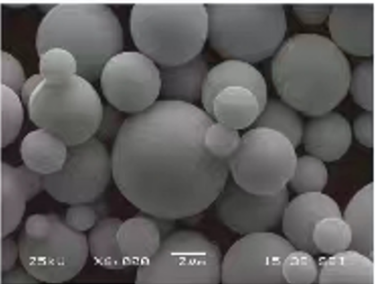
A Composição do Pó de Alta Pureza
Os pós de alta pureza vêm em várias composições, dependendo do metal ou liga em questão. Cada tipo tem suas características únicas, tornando-o adequado para aplicações específicas. Abaixo está uma tabela detalhando alguns dos pós metálicos de alta pureza mais comuns, suas composições e características principais.
| Pó metálico | Composição | Nível de pureza | Principais características |
|---|---|---|---|
| Pó de alumínio | Al (99,9% ou superior) | 99.9% | Leve, alta condutividade, resistente à corrosão |
| PÓ DE COBRE | Cu (99,99% ou superior) | 99.99% | Excelente condutividade elétrica, dúctil |
| Pó de titânio | Ti (99,5% ou superior) | 99.5% | Alta relação resistência/peso, resistente à corrosão |
| Pó de prata | Ag (99,99% ou superior) | 99.99% | Alta condutividade térmica e elétrica |
| Pó de Ouro | Au (99,99% ou superior) | 99.99% | Alta resistência à corrosão, excelente condutividade |
| Pó de ferro | Fe (99,9% ou superior) | 99.9% | Magnético, facilmente ligado com outros metais |
| Níquel em pó | Ni (99,8% ou superior) | 99.8% | Alta resistência à oxidação e corrosão |
| Zinco em pó | Zn (99,9% ou superior) | 99.9% | Resistente à corrosão, usado na galvanização |
| Pó de platina | Pt (99,95% ou superior) | 99.95% | Extremamente resistente à corrosão, propriedades catalíticas |
| Pó de Paládio | Pd (99,95% ou superior) | 99.95% | Excelentes propriedades catalíticas, resistente à corrosão |
Características de Pó de alta pureza
As características dos pós de alta pureza são o que os tornam tão valiosos em várias indústrias. Aqui estão algumas das propriedades mais importantes:
- Pureza: Níveis de alta pureza (99,9% e acima) garantem que haja impurezas mínimas que possam afetar o desempenho do material.
- Tamanho e distribuição de partículas: Tamanho e distribuição consistentes das partículas são críticos para obter uniformidade no produto final.
- Estabilidade química: Esses pós são quimicamente estáveis, o que significa que não reagem facilmente com outras substâncias, o que é vital em ambientes onde a reatividade pode levar a problemas de segurança ou falhas de produto.
- Fluidez: A capacidade do pó de fluir suavemente é essencial em processos de fabricação como impressão 3D ou metalurgia do pó.
- Densidade: A densidade do pó pode afetar as propriedades do produto final, como resistência e durabilidade.
Tipos de pós metálicos de alta pureza
Vamos mergulhar mais fundo em pós metálicos de alta pureza específicos, examinando suas propriedades exclusivas, aplicações e por que eles se destacam.
1. Pó de Alumínio
- Propriedades: O pó de alumínio é conhecido por seu baixo peso e alta condutividade elétrica. Também é resistente à corrosão, o que o torna ideal para aplicações nas indústrias aeroespacial e automotiva.
- Formulários: Amplamente utilizado na produção de tintas, explosivos e como componente em revestimentos metálicos.
2. Pó de cobre
- Propriedades: Com excelente condutividade elétrica e ductilidade, o pó de cobre é um material chave em eletrônicos.
- Formulários: Usado na produção de componentes elétricos, tintas condutoras e revestimentos.
3. Pó de Titânio
- Propriedades: O pó de titânio oferece uma alta relação resistência-peso e é resistente à corrosão, tornando-o perfeito para implantes médicos e componentes aeroespaciais.
- Formulários: Comumente usado em impressão 3D, aeroespacial e campos biomédicos.
4. Pó de Prata
- Propriedades: O pó de prata é altamente condutivo e possui propriedades antimicrobianas, o que o torna valioso em eletrônicos e aplicações médicas.
- Formulários: Usado em pastas condutoras, células solares e revestimentos antimicrobianos.
5. Pó de Ouro
- Propriedades: O pó de ouro é extremamente resistente à corrosão e possui excelente condutividade elétrica, tornando-o ideal para eletrônicos de ponta e dispositivos médicos.
- Formulários: Usado em eletrônicos, joias e como catalisador em reações químicas.
6. Pó de Ferro
- Propriedades: O pó de ferro é magnético e facilmente ligado, o que permite uma vasta gama de aplicações na fabricação e metalurgia.
- Formulários: Utilizado em peças automotivas, materiais magnéticos e como catalisador em reações químicas.
7. Pó de níquel
- Propriedades: O pó de níquel é altamente resistente à oxidação e corrosão, o que o torna adequado para ambientes agressivos.
- Formulários: Utilizado em baterias, superligas e como catalisador em processos de hidrogenação.
8. Zinco em pó
- Propriedades: O pó de zinco é conhecido principalmente por sua resistência à corrosão e é frequentemente utilizado em revestimentos protetores.
- Formulários: Amplamente utilizado em galvanização, como agente anticorrosivo e na produção de baterias.
9. Pó de platina
- Propriedades: O pó de platina é incrivelmente resistente à corrosão e possui excelentes propriedades catalíticas, tornando-o valioso nos campos industrial e médico.
- Formulários: Utilizado em conversores catalíticos, células de combustível e como catalisador em várias reações químicas.
10. Pó de paládio
- Propriedades: O pó de paládio é conhecido por suas propriedades catalíticas e resistência ao embaciamento, tornando-o ideal para uma variedade de processos químicos.
- Formulários: Comumente utilizado em eletrônicos, conversores catalíticos e purificação de hidrogênio.
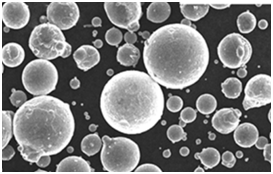


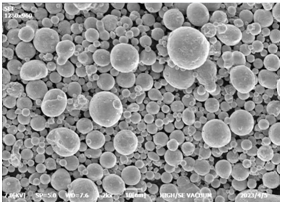
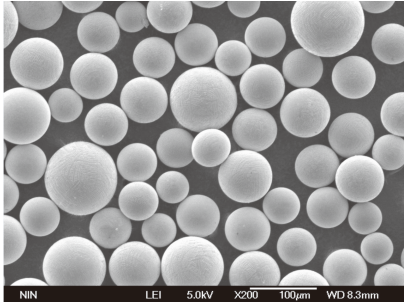
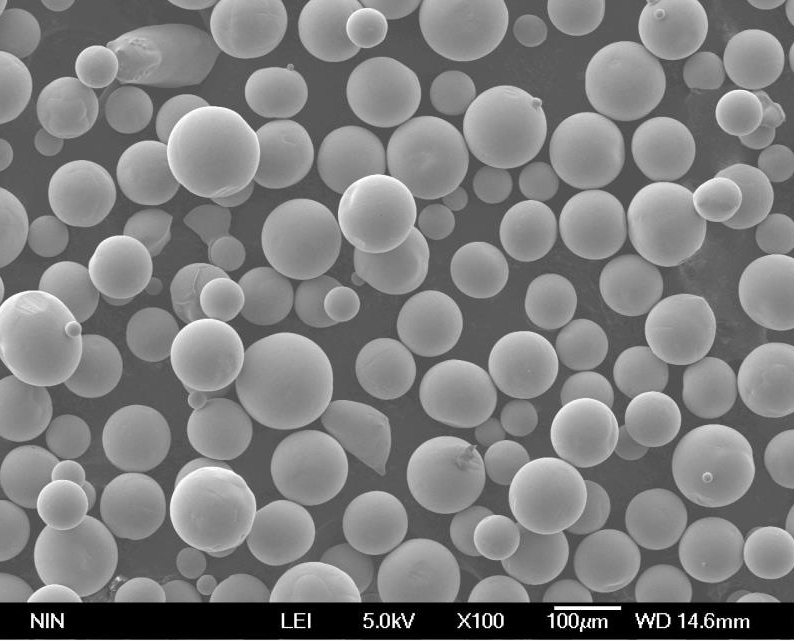
Aplicações de pó de alta pureza
Os pós de alta pureza são utilizados em uma variedade de indústrias, cada uma exigindo propriedades diferentes dependendo da aplicação. Aqui está uma análise de como esses pós são utilizados em vários campos:
| Setor | Aplicativos comuns | Exemplos de pós utilizados |
|---|---|---|
| Eletrônicos | Tintas condutoras, placas de circuito impresso (PCBs), semicondutores | Cobre, prata, ouro, paládio |
| Aeroespacial | Componentes leves, revestimentos, peças impressas em 3D | Alumínio, titânio, níquel |
| Automotivo | Componentes de motor, conversores catalíticos, eletrodos de bateria | Platina, paládio, zinco, ferro |
| Médico | Implantes, próteses, revestimentos antimicrobianos | Titânio, prata, ouro, platina |
| Energia | Células de combustível, painéis solares, baterias | Platina, níquel, cobre, prata |
| Química | Catalisadores, processos de hidrogenação | Paládio, platina, níquel |
| Joias | Joias de alta qualidade, revestimentos resistentes à corrosão | Ouro, prata, platina |
Especificações, tamanhos, classes e padrões
Compreender as especificações, tamanhos e graus de pós de alta pureza é fundamental para selecionar o material certo para suas necessidades. Abaixo está uma tabela que descreve as principais especificações para cada pó metálico.
| Pó metálico | Faixa de tamanho de partícula (µm) | Grau de pureza | Padrões |
|---|---|---|---|
| Pó de alumínio | 1 – 100 | 99,9% (alta pureza) | ASTM B928/B928M-15 |
| PÓ DE COBRE | 0.5 – 75 | 99,99% (pureza ultra alta) | ASTM B170 |
| Pó de titânio | 5 – 45 | 99,5% (alta pureza) | ASTM F67, ASTM F136 |
| Pó de prata | 1 – 50 | 99,99% (pureza ultra alta) | ASTM B832 |
| Pó de Ouro | 1 – 10 | 99,99% (pureza ultra alta) | ASTM B488 |
| Pó de ferro | 10 – 150 | 99,9% (alta pureza) | ASTM A575, ASTM A876 |
| Níquel em pó | 5 – 20 | 99,8% (alta pureza) | ASTM B330 |
| Zinco em pó | 1 – 50 | 99,9% (alta pureza) | ASTM B822 |
| Pó de platina | 1 – 25 | 99,95% (pureza ultra alta) | ASTM B562 |
| Pó de Paládio | 0.5 – 5 | 99,95% (pureza ultra alta) | ASTM B563 |
Fornecedores e detalhes de preços para pós de alta pureza
Quando se trata de obter pós de alta pureza, vários fornecedores respeitáveis oferecem uma gama de produtos. Os preços podem variar significativamente dependendo da pureza, tamanho das partículas e quantidade comprada.
| Fornecedor | Pós disponíveis | Faixa de preço (por kg) | Localização |
|---|---|---|---|
| Elementos americanos | Alumínio, cobre, titânio, níquel | $150 – $800 | EUA |
| Advanced Materials Inc | Prata, ouro, platina, paládio | $500 – $2,000 | EUA |
| Goodfellow | Zinco, ferro, cobre, níquel | $100 – $600 | REINO UNIDO |
| Alfa Aesar | Titânio, alumínio, ouro, prata | $200 – $1,500 | EUA |
| Metal Powders USA | Cobre, zinco, níquel, paládio | $250 – $1,200 | EUA |
Comparando pós de alta pureza: vantagens e limitações
Escolher o pó de alta pureza certo geralmente envolve comparar as vantagens e limitações de cada opção. Aqui está uma tabela que detalha esses fatores para cada pó metálico discutido.
| Pó metálico | Vantagens | Limitações |
|---|---|---|
| Pó de alumínio | Leve, resistente à corrosão, condutivo | Oxida facilmente, ponto de fusão mais baixo |
| PÓ DE COBRE | Excelente condutividade, dúctil | Propenso à oxidação, relativamente caro |
| Pó de titânio | Alta relação resistência/peso, biocompatível | Caro, difícil de processar |
| Pó de prata | Condutividade superior, propriedades antimicrobianas | Caro, mancha com o tempo |
| Pó de Ouro | Excelente condutividade, resistente à corrosão | Muito caro, pesado |
| Pó de ferro | Magnético, facilmente ligado | Propenso à ferrugem, pesado |
| Níquel em pó | Resistente à corrosão, alto ponto de fusão | Reações alérgicas em algumas aplicações |
| Zinco em pó | Resistente à corrosão, acessível | Baixo ponto de fusão, não muito forte |
| Pó de platina | Extremamente resistente à corrosão, excelentes propriedades catalíticas | Extremamente caro, pesado |
| Pó de Paládio | Alta eficiência catalítica, resistente a manchas | Muito caro, disponibilidade limitada |

perguntas frequentes
Aqui estão algumas perguntas comuns sobre pós de alta pureza, juntamente com respostas detalhadas.
| Pergunta | Resposta |
|---|---|
| O que define um pó de alta pureza? | Os pós de alta pureza têm um nível de pureza de 99,9% ou superior, garantindo impurezas mínimas. |
| Por que a pureza é importante em pós metálicos? | A pureza é crucial porque as impurezas podem afetar o desempenho, a condutividade e a segurança do produto final. |
| Quais indústrias usam pós de alta pureza? | Os pós de alta pureza são utilizados nas indústrias de eletrônicos, aeroespacial, automotiva, médica, energia e química. |
| Como escolho o pó de alta pureza certo? | Considere a aplicação específica, as propriedades necessárias e o orçamento para selecionar o pó apropriado. |
| Quais são os desafios no manuseio de pós de alta pureza? | O manuseio pode ser desafiador devido ao seu tamanho fino de partículas e potencial reatividade. Práticas adequadas de armazenamento e manuseio são essenciais. |
| Os pós de alta pureza são caros? | Sim, os pós de alta pureza tendem a ser mais caros devido ao complexo processo de fabricação e à necessidade de materiais de alta qualidade. |
| Como os pós de alta pureza são produzidos? | Eles são tipicamente produzidos por meio de processos como atomização, redução química e eletrólise para garantir alta pureza e consistência. |
| Os pós de alta pureza podem ser personalizados? | Sim, muitos fornecedores oferecem opções de personalização em termos de tamanho de partícula, distribuição e níveis de pureza. |
| Quais são as preocupações ambientais com pós de alta pureza? | A produção e o descarte de pós de alta pureza devem ser gerenciados cuidadosamente para evitar a contaminação ambiental. A reciclagem e o fornecimento responsável podem mitigar essas preocupações. |
| Existem alternativas aos pós de alta pureza? | Dependendo da aplicação, pós de menor pureza ou materiais diferentes podem ser usados, mas eles podem não oferecer o mesmo nível de desempenho. |
Conclusão
Pós de alta pureza são os heróis anônimos da fabricação e tecnologia avançadas. Com sua pureza excepcional e propriedades únicas, esses pós desempenham um papel fundamental em indústrias que vão desde a aeroespacial até a eletrônica. Seja para aprimorar o desempenho de um produto ou desenvolver tecnologias de ponta, entender as nuances dos pós de alta pureza é essencial. Ao escolher o pó certo para sua aplicação, você pode garantir o desempenho, a confiabilidade e a eficiência ideais em seus projetos.

